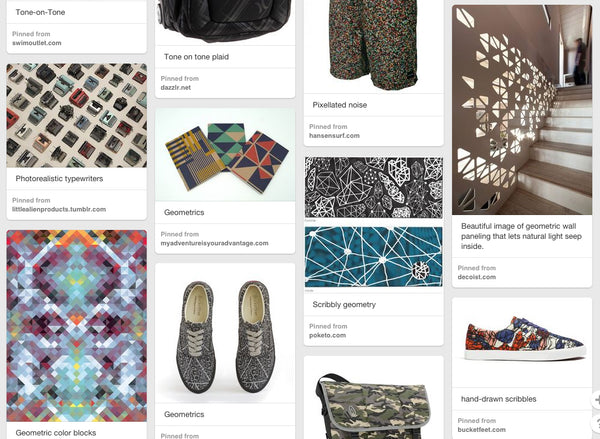My Design Process (Part 1): Research and Inspiration
I'm an industrial designer by training, so unsurprisingly one of my favorite jobs with running Po Campo is designing new products. In the beginning, like everything else with starting a business, product development was a little chaotic. But over time I have established a solid design process that really works for me and my partners. I'm often asked by both designers and design-lovers what my product development process is like, and this blog post goes over the first part of laying the groundwork of research and inspiration.
How do I come up with my ideas?
Ideas for new bags can come from a myriad of places. Sometimes, like the original Po Campo bags, I design a new bag when I can't find one in the market that does what I want so I decide to make one myself. Sometimes I get ideas from customers: if I hear a request for a certain bag or item enough times, and I like the idea of it, then I'll start working on it. Sometimes an idea will just hit me and capture my imagination long enough for me to start working on it. Coming up with ideas is not a problem for me. It's choosing which ones to pursue that can be challenging!

Rough sketching on an airplane. You never know when inspiration will strike.
I keep a running list of the ideas and then when it is time to start working on new product development (about twice a year), I run each idea through a process that begins with research, and finding the appropriate design inspiration to fuel the rest of the design process.
1. Market Analysis
As much as I would love to just make everything that I think is a good idea, I've learned to develop some discipline and try to only produce products that have a decent chance of selling. Yes, this means that some revolutionary and awesome ideas never get to see the light of day, but having lots of inventory of something that is a slow seller is really crippling to a small business, so I have to be somewhat risk-adverse. Or at least a good risk manager.
The first thing I do is a market analysis to see what the competitors are doing. For example, if I'm working on a yoga mat bag, I'll make a chart to show what the other brands are making, the features of the bag, dimensions, where they are sold, how much it costs, etc.

Yoga Mat Bag Competitive Research Matrix
Some ideas get tossed out right away at this point if the average price is lower than I think we can deliver at, or if there are so many options that I don't think we'll be able to stand out.
This exercise also helps me understand what features are shared within the product category, and what opportunities there are for the Po Campo offering to be unique. For the yoga mat bag example, I learned that the bags I admired had ventilation holes to air out a sweaty mat or clothes, so I made a note to include that in my design. I also noticed that none of the bags I looked at had reflective details, which is something that Po Campo bags have, so I made sure to include that as a differentiating feature.
2. Consumer Research
Research is one of my favorite things to do; I find it so enlightening. At this stage of the project, there are different types of research that I will do depending on what I want to find out. For this yoga bag project, I did a survey to find out how many of our current and potential customers practice yoga (39%, vs 9% of total US population). I also read through comments on sites like Amazon to see if there were features or benefits that people really liked or repeatedly wanted.
3. Creating the product narrative
At the start of a design project, I like to create a little story about the bag to give it a reason for being. I have a good sense of who our customer is, so I think about why she would like to have this bag in her life, what activities she is doing and why and how this bag would help her do that and contribute to her physical and mental well-being. Some of this knowledge comes from the research I do in this phase, some of the knowledge is just tacitly acquired from being in the business. If I struggle coming up with the narrative, I’ll often reconsider if this is a good idea to pursue.

From there, I create a visual mood board to help me identify design elements, like shape, color and texture, that will bring this product story to life. Nowadays I usually create these on Pinterest so that I can refer to them later, and share the inspiration with collaborators.

Follow us on Instagram (@po_campo) for behind the scenes design process pics!
4. Building a Design Brief
I find it easier to design products when I have some parameters, or constraints. At this point, I’ll know:
- Rough dimensions
- Approximate cost of the final bag, which helps me determine the complexity of the design and what components and fabrics I can include.
- Features to include in the design, both “must-haves” and “nice-to-haves”.
- Visual inspiration to refer to while brainstorming.
With this information in hand, I’ll move on to the next stage of my design process: Sketching. I’ll cover that, and subsequent refinement stages, in the next post about my process.
Other posts you might like:
How Our Bike Ride Print Was Inspired by Russian Constructivism
Why We Bike: How I Came Up with the Idea for Po Campo Bags
 Skip to content
Skip to content

Leave a comment